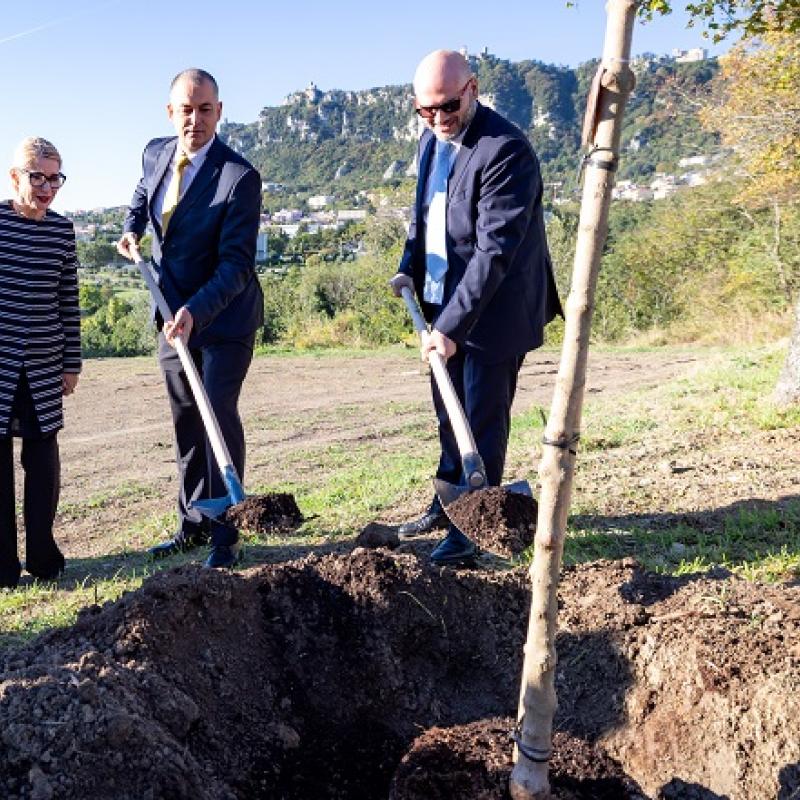
75-tree forest planted for UNECE in San Marino to promote sustainable cities for current and future generations
75 years ago, the United Nations Economic Commission for Europe (UNECE) started working on forests. Today, we recognize their enormous potential not only for humans, fauna, flora, and the environment, but also for cities. In an urbanizing world, the contribution of forests to cleaning our air and water, cooling urban heat islands, supporting our health and well-being by shielding us from floods and landslides and providing opportunities for recreation are increasingly important.
With the planting of 75 trees in San Marino, UNECE reaffirms its commitment to supporting countries to make cities greener, more sustainable and resilient. This tiny forest connects old and young, thus allowing generations to live in a healthier urban environment today and tomorrow.
75 trees for urban biodiversity
Like all urban forests, this tiny forest in San Marino will be a biodiverse haven, with local pollinators like butterflies and bees, as well as beetles, snails, and frogs. Tiny forests re-introduce these "ordinary species", crucial links in the food chain, in urban areas. Pioneered by Akira Miyawaki, a Japanese botanist, the rapid regeneration of forests on damaged ground by planting young indigenous species close together allows for mature ecosystems to develop in just 20 years as opposed to 200 years for a forest to recover.
75 trees for San Marino and the world
Thanks to a generous donation to the Republic of San Marino, these 75 trees planted on the occasion of the 83rd session of the UNECE Committee on Urban Development, Housing and Land Management, hosted in San Marino from 3 to 7 October 2022, are now part of the San Marino landscape.
Urban forests and trees are “a critical nature-based solution to many of our toughest challenges,” said Paola Deda, UNECE Director of Forests, Land and Housing Division. Urban trees create healthier, quieter, cooler, energy-saving urban spaces. They help mitigate the negative impacts of climate change by absorbing up to 150kg of carbon dioxide per year while improving our physical and mental health. Urban forests and green spaces increase urban biodiversity and contribute to food security by providing some of the most nutritious foods. They also have important economic benefits: not only do they beautify neighbourhoods and increase property values, but also attract tourism and business, ultimately creating new job opportunities. With their many contributions, urban forests and trees, provide a model to “build a better, more sustainable future,” said Ms. Deda.
Background:
In 2019 UNECE launched the Trees in Cities Challenge which invites mayors and local government to make tree-planting pledges and join a global movement to restore, protect and maintain trees and forests in urban areas worldwide.
Discover UNECE Trees in Cities Challenge and how you can show your commitment to greener, resilient and more sustainable cities: https://treesincities.unece.org/
For more information on sustainable urban and peri-urban forestry: https://unece.org/info/Forests/pub/365294
To find out more about the issues being discussed at the UNECE Committee on Urban Development, Housing and Land Management: https://unece.org/housing/cudhlm-session83.
Photo credit: Simone Maria Fiorani Photographer

